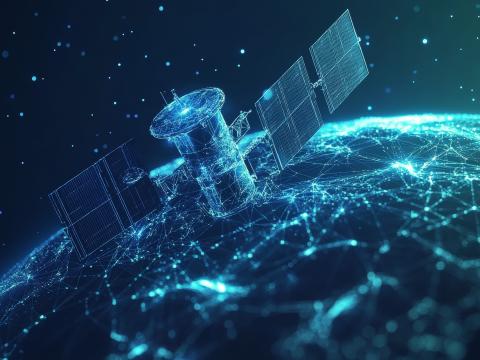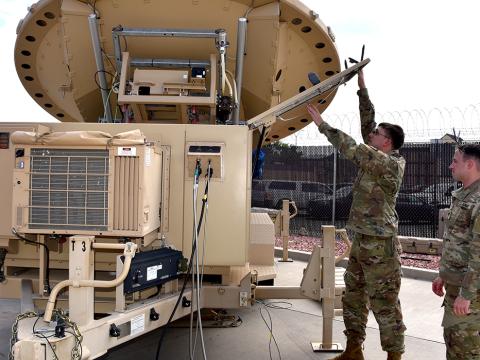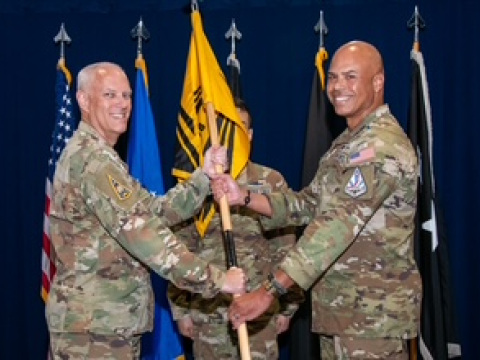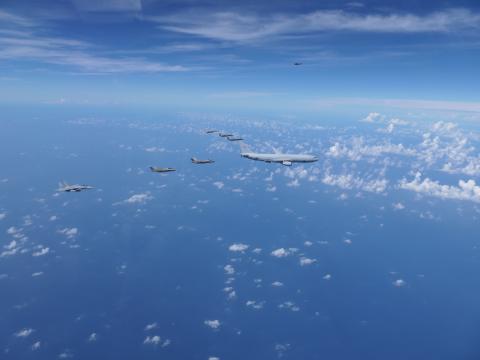New Space Race With China and Russia Challenges Military Intelligence
China launched 200 satellites during the last 12 months and is expected to launch a total of 400 to 500 in the near future, according to a senior Space Force intelligence official. Together with Russia, the Asian country has developed counter-satellite capabilities as well.
“They have basically decided that our Achilles heel is in cyberspace and space, and they are building tremendous capabilities to take our space capabilities because they believe they can do that,” said Joseph Rouge, deputy director of intelligence, surveillance and reconnaissance, U.S. Space Force, during a panel discussion at the 2023 Intelligence and National Security Summit in National Harbor, Maryland, on Thursday.
Rouge expressed concern that China and Russia could deny the U.S. its ability to watch battlefields from space as well as follow any friendly force movement with accuracy.
This may very well mean that U.S. forces could find themselves denied the intelligence, the communications and other services that satellites offer.
While assets could be knocked out by adversaries by different means, including nonkinetic attacks, there are also alternatives and the future of intelligence includes other avenues.
“I don't care where the information, the data, comes from; there's commercial imagery,” said Leila Gardner, assistant director of intelligence and assistant deputy commandant for information, U.S. Marine Corps.
And collecting information from commercial or open sources has comes with the drawbacks of using open-source intelligence, or OSINT. Among them is the vast amount of information that must be evaluated, as the vetting process changes depending on the source. “We have to figure out how to process it,” said Dennis Eger, senior open-source intelligence advisor, U.S. Army.
Once the material has been processed, there’s a second challenge, “how we get it to the tactical commander,” stated Eger. As large volumes of information could potentially result en less, not more, useful interpretations of the battle space.
Eger added that the Army has created OSINT collection teams and were integrating them into exercises to train all warfighters in the use of this resource.
"Data that has no chain of command," said Leila Gardner, Assistant Director of Intelligence, U.S. Marine Corps at #IntelSummit23 explaining how information should be shared at speed without hindrance. pic.twitter.com/96RZNMlZCm
— Diego Laje, MJ (@dlaje) July 13, 2023
Gardner also explained that to avoid giving away information that could potentially provide intelligence to adversaries, Marines are trained not only about the use of devices with a radio signature, but also best behaviors that could potentially be used for the adversaries’ OSINT activities.
The Navy was concerned that information and electronic warfare personnel had limited opportunities to simulate combat scenarios and for the future; this is expected to change.
“We cannot let [information warfare officers] practice [electronic warfare] for the first time when they actually do those things on the keyboard, or pull that switch, and that cannot be in a crisis,” said Scott Bray, deputy director of naval intelligence.
Lt. Gen. Michael Groen, USMC (Ret.), moderated the panel “Service Intelligence Priorities,” which also included Lt. Gen. Leah Lauderback, deputy chief of staff for intelligence, surveillance and reconnaissance and Cyber Effects Operations Headquarters, U.S. Air Force; and Jeffrey Radgowski, deputy assistant commandant for intelligence, U.S. Coast Guard.




Comments